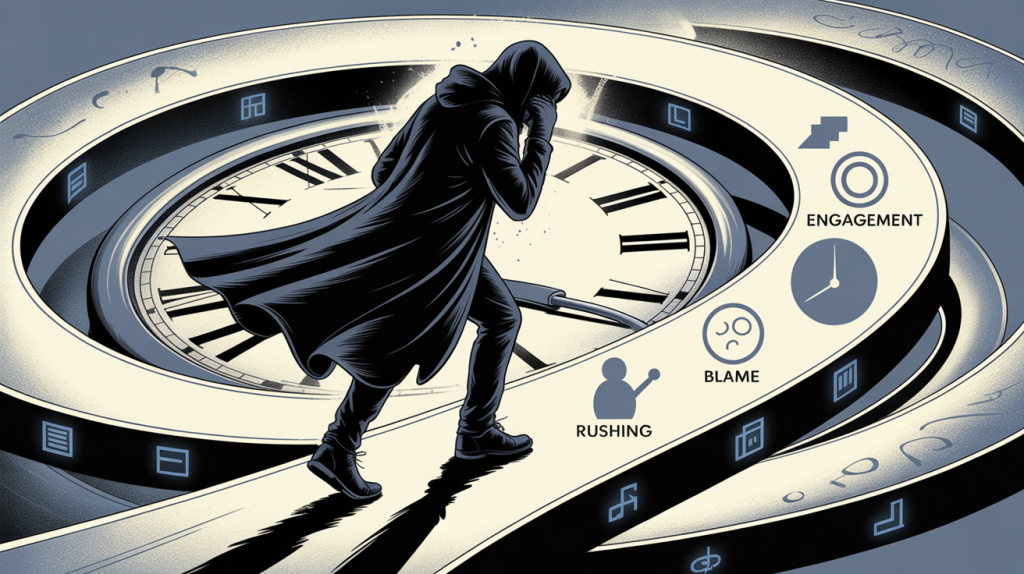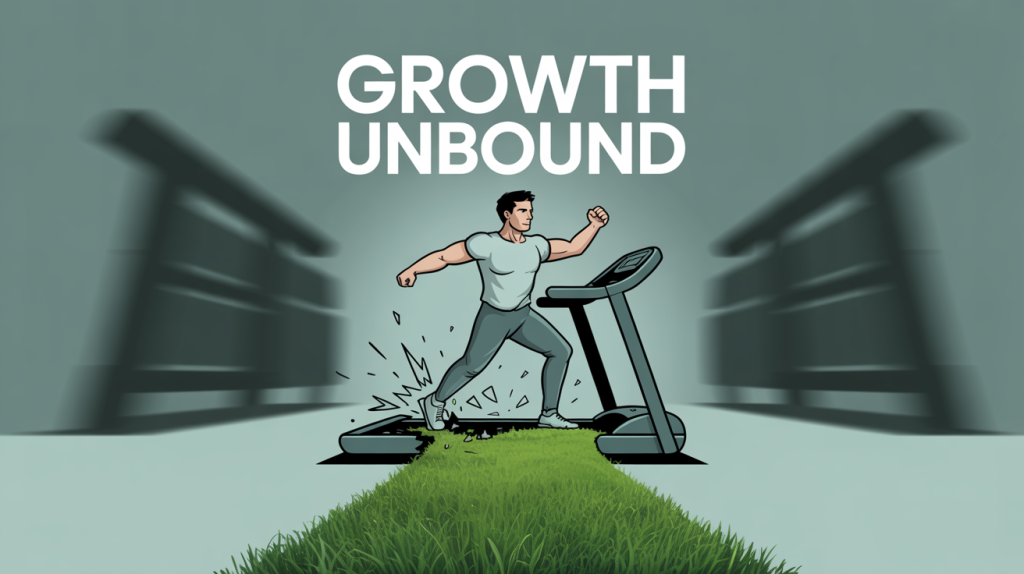You know the feeling. You spend hours on a post, you publish it, and it gets a few likes. Crickets. You immediately feel a rush of frustration, so you blame the algorithm. You tell yourself, “This isn’t worth it,” and you put off creating your next piece of content.
But then the guilt kicks in, you feel obligated to show up, and you rush to create a new post just to have something on your feed. And the cycle repeats.
You’re not alone. This is the single most common, frustrating, and self-sabotaging loop that content creators get stuck in. It leads to burnout, inconsistent content, and a complete lack of real growth. You feel like a hamster on a wheel, running as fast as you can but going nowhere.
The problem isn’t the algorithm. The problem isn’t your content. The problem is the loop itself. It’s a broken mindset and a reactive strategy that drains your energy and stunts your growth.
This article is your way out.
We’re going to break down this vicious cycle, expose the toxic thinking that fuels it, and give you the powerful, predictable, and sustainable framework you need to break free for good. We’ll show you how to regain control, stop the frustration, and build a content strategy that actually works—without the burnout.
Stop the loop. Start growing.
1. The Loop: Understanding the Cycle of Frustration
Before we can give you the solution, we have to fully understand the problem. You can’t break a cycle you don’t recognize. This loop is more than just a series of events; it’s a mindset that traps creators in a constant state of anxiety and underperformance. Let’s walk through it, because chances are, you’ve lived every single one of these stages.

- Your post doesn’t do well. It’s the moment of truth. You’ve published your content, and the numbers are in. The engagement is low, the likes are few, and the comments are silent. This isn’t just a metric; it’s a painful moment of validation that feels like a personal failure.
- So you blame the algorithm. It’s the most common and least helpful reaction. The algorithm is the easiest scapegoat. “The algorithm is broken,” “Instagram doesn’t want me to win,” “My content is being hidden.” This is the toxic story we tell ourselves to avoid looking at the real problem, which is our strategy.
- You put off creating content. The blame game leads to procrastination. The thought of creating another post that might “fail” is exhausting, so you put it off. You feel a creative block, a sense of dread, and an urge to just disappear from social media for a while.
- But you still feel obligated to show up. The guilt and pressure to be consistent kick in. You know that you “have to” post to stay relevant, but your heart isn’t in it. This internal conflict creates a feeling of anxiety that makes content creation feel like a massive chore.
- So you rush to create a new post. In a moment of panic or a sudden burst of fleeting motivation, you rush to create something just to have a post on your feed. The content is uninspired, it’s not well thought out, and it’s missing the value that your audience truly needs.
And that’s where the loop begins again. The rushed, low-quality post doesn’t do well, and the cycle of frustration, blame, and burnout perpetuates itself. This is the reality for countless creators, but it doesn’t have to be yours.
2. The Antidote: How to Break Free for Good
You’ve seen the loop for what it is—a cycle of frustration and uninspired content. Now, let’s talk about the antidote. The solution isn’t to try harder; it’s to think and act differently. Breaking free requires a powerful mindset shift and a strategic plan that replaces the cycle with a system for sustainable growth.
Here is your two-part solution:
Part 1: The Mindset Shift
First, you have to stop blaming the algorithm. The algorithm is just a machine that responds to user behavior. Your low-performing post isn’t a failure; it’s data.
It’s feedback telling you that your content didn’t resonate with your audience, and that’s a powerful lesson, not a reason to quit. You have to reframe your thinking from chasing viral numbers to serving your audience. The goal is to provide value, and the data will tell you if you succeeded.

Part 2: The Strategic Fix
Once your mindset is aligned, you can replace the loop’s reactive behavior with a proactive strategy.
- Create a Strategy: Instead of rushing to create a new post out of obligation, you create a purposeful plan. You know who your audience is, what problems you solve, and what type of content you will create to serve them. This eliminates the frantic guesswork.
- Be Consistent (with Purpose): Stop feeling obligated to show up. Instead, make consistency a strategic choice. A consistent schedule builds trust with your audience and signals to the algorithm that you are a reliable source of content. It’s about being purposeful, not just present.
- Leverage Data, Don’t Fear It: Your low-performing post is now your greatest asset. Instead of blaming the algorithm, you analyze the data to understand why it didn’t work. Was the hook weak? Was the topic not relevant? Use these insights to inform your next piece of content, making every post a calculated step forward, not a random act.
The key to breaking the loop is to replace it with a cycle of strategy, execution, and analysis. This is how you regain control and build a powerful, predictable content engine that works for you, not against you.
Your New Reality: A Sustainable Way to Grow
You’ve identified the loop for what it is—a cycle of frustration and burnout. You’ve also been given the antidote—a strategic, data-driven mindset.
Now, it’s time to talk about your new reality. When you break free from the loop, you don’t just stop feeling frustrated; you start building a powerful, predictable, and sustainable content engine.

Your new reality looks like this:
- Your content has a purpose: Instead of creating content just to post, every piece is a calculated step forward, designed to serve your audience and move you closer to your goals.
- You are in control: You’re no longer at the mercy of the algorithm. You are armed with a strategy and the data to constantly refine it. Low-performing posts aren’t a reason to quit; they’re valuable feedback.
- You are a strategic creator: You’ve moved from being a reactive content creator to a proactive content marketer. This is what separates the brands that are just “on social media” from the brands that are actually winning.
Stop blaming the algorithm. Stop rushing your content. The loop ends now. Take this framework, build your strategy, and go create content that matters.

